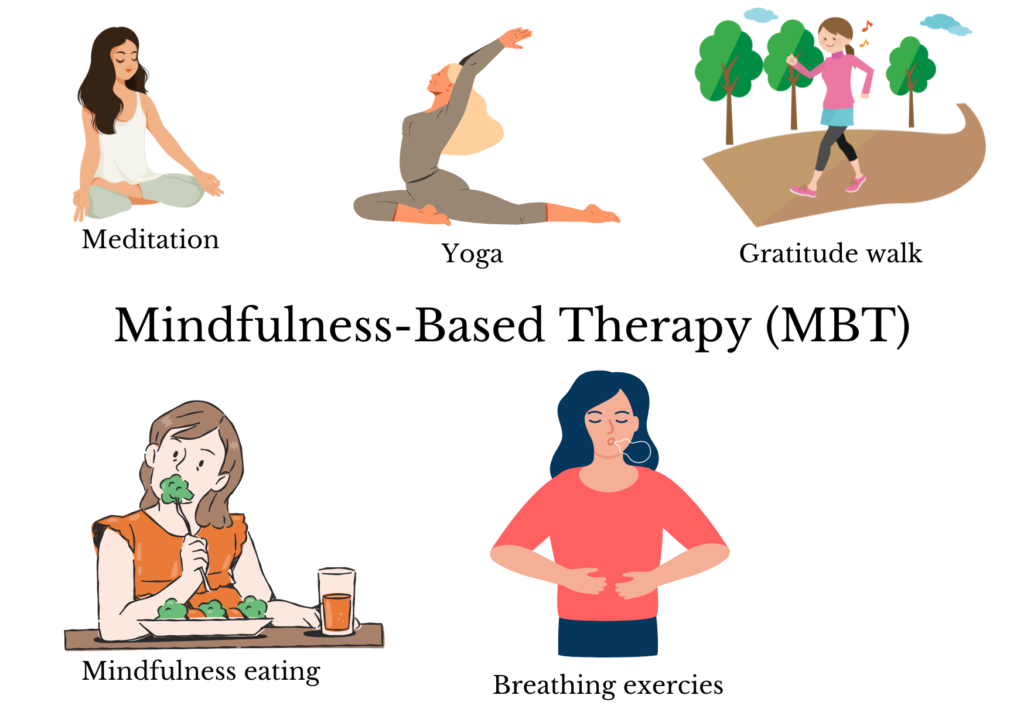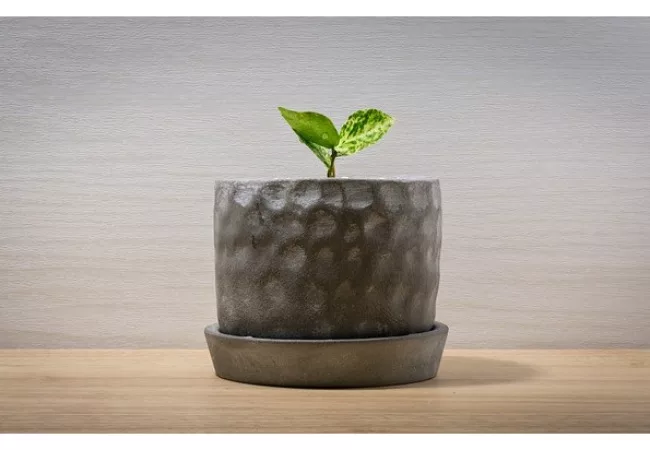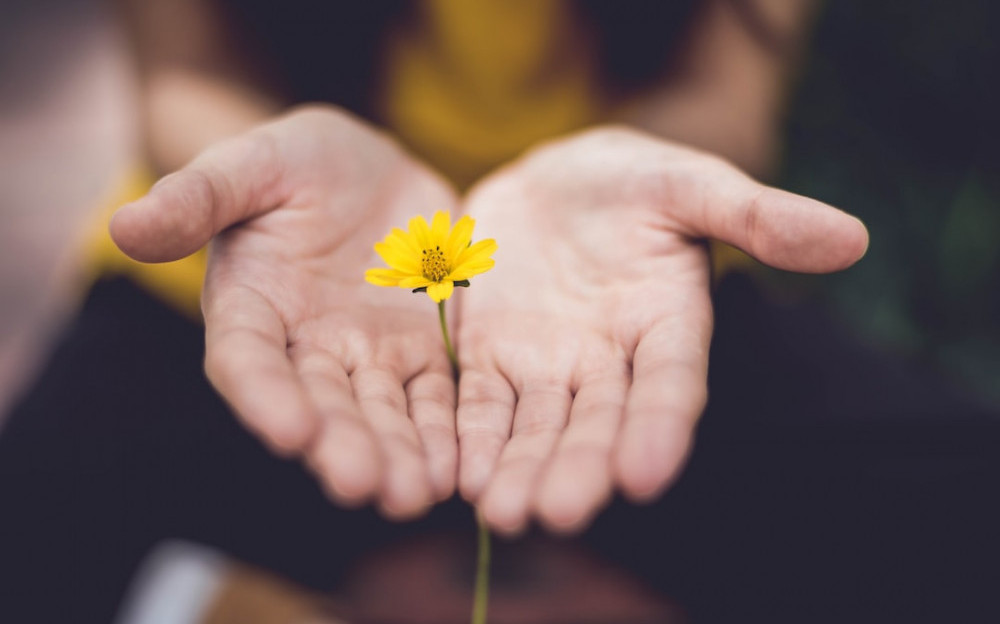Mindfulness has been a game-changer in my life, and I don’t think it’s an exaggeration to say that. Before getting into mindfulness, my days seemed to run automatically. I relied on the numbers on the calendar and photos of life events to gauge how my life was progressing. I now realize much of the time, I wasn’t truly present.
Discovering mindfulness was like a wake-up call. It makes even the simplest, most casual moments that often don’t stick in my memory now become so much more meaningful.
So, if you haven’t given mindfulness a try yet, I strongly encourage you to take a chance on it. In this post, I’ll provide you with five tips in my list of how to practice mindfulness for beginners. These tips are not only highly effective and easy to follow but are also beginner-friendly. Plus, they won’t consume hours of your time. Just dedicate 10-15 minutes each day, and you’ll be able to reap all the benefits of mindfulness. So, let’s get started 🌟

How to practice mindfulness for beginners
What is mindfulness?
Mindfulness is simply be present at the moment, be aware of your life RIGHT NOW.
You might not realize it, but most of our time is spent not fully engaging in the present moment. Our brains often operate on autopilot, the auto pilot help making our life functioning more easily.
However, when we are in our awareness, we dedicate a significant chunk of hours to think about our problems, worrying about the future, or dwelling on sad memories from the past. This puts our minds under a constant workload and preventing us from truly resting or fully experiencing the present moment.

Even if you are having dinner with others, your minds can still be wandering off to work. On a Friday night when you’re at home, your thoughts might still be consumed by drama or problematic relationships in your life.
It’s not just our bodies that need rest; our minds do too.
So, what if you just couldn’t let go of those kinds of thoughts ?
Don’t worry or feel bad about it; this is just human nature.
When you practice mindfulness, you’ll understand that it’s not about trying to change your thoughts or feelings but rather acknowledging them as they come and letting them pass without getting entangled in them. Yes, you recognize them, but you don’t let them consume you all the time.
What do scientific studies reveal about the benefits of mindfulness?
There has been many research studies been conducted about the benefits of mindfulness, and the results often stunned me of how simple practices can deliver such a great benefits.
A new study from the Mental Health Foundation (MHF) showed that 75% of regular doctors in the UK think mindfulness is helpful for people with mental health issues (MHF, 2010).
You can spend time reading many interesting study research about the benefit of mindfulness just by a click on google. In the range of this post, I will share with you a famous research about the benefit of mindfulness, which is the study call ” Mindfulness-Based Stress Reduction and Health Benefits: A Meta-Analysis” conducted by Eberth and Sedlmeier, published in the Journal of Psychosomatic Research in 2012.
This meta-analysis investigated the impact of Mindfulness-Based Therapy (MBT) by analyzing 209 studies involving 12,145 participants of different demographics and clinical backgrounds.

The results showed that when people tried Mindfulness-Based Therapy (MBT), it worked moderately well in studies done before and after the therapy.
Also, when they compared MBT to other treatments like learning about emotions and getting support, MBT still had good results.
You can read more research studies here:
The effectiveness of mindfulness-based stress reduction (MBSR) for survivors of breast cancer: study protocol for a randomized controlled trial – Jiayan Huang, Lu Shi
Mindfulness and bodily distress – Lone Overby Fjorback
Mindfulness-based stress reduction for people with chronic diseases – Monika Merkes
Mindfulness-based stress reduction for healthy individuals: A meta-analysis – Bassam Khoury, Manoj Sharma, Sarah E Rush, Claude Fournier
How to practice mindfulness for beginners – It’s easier than you may think
Observing a piece of nature
Do you have any piece of nature inside your home? Alternatively, you could take a walk outside and give this method a try. It could be your garden, a park bench, or even a quiet corner in your room with a potted plant.
You can choose a flower, a small plant, a fish tank, or leaves. They are all perfect objects to start practicing mindfulness.

Now start with a few deep breaths to settle your mind and bring your focus to the present moment.
Details Matter: Slowly start noticing the details. Look at the color, texture, and shape of the flower or leaves. Observe the way it’s structured, the patterns, and any unique features it has.
Engage other senses as well. If it’s a flower, take a gentle whiff to smell its fragrance. If you’re near a fish tank or leaves, try to notice any sounds associated with it.

Simply let go of any distractions or wandering thoughts. If your mind starts to drift, gently bring your attention back to the flower or leaves.
Be present without passing judgment. It’s not about labeling the flower as “pretty” or “not pretty.” Just observe it as it is.
Keep exploring your nature piece. Notice things you might have missed at first glance. Maybe there are tiny insects on the leaves or delicate veins running through them.
After a few minutes, slowly release your focus. Take a moment to appreciate the time you spent observing the nature piece.
And that’s it!
Observing a piece of nature in this way helps you focus on the present moment. Plus, it won’t take up much of your time – just spending 5 minutes watching something is already enough.
Watching the space around you
Take a moment to pause whatever you’re doing and take a few deep breaths. This helps bring your attention to the present moment.
As you look around, try to do so without judgment. Don’t label things as good or bad, just observe them as they are.

While you look around, maintain a gentle focus on your breathing. This helps keep you grounded in the present moment.
As you observe different things, notice how you react. Do you feel drawn to certain objects? Do you have any emotions or thoughts arising?
If your mind starts to wander or get lost in thoughts, gently bring your attention back to what you’re seeing.
After a few minutes of looking around mindfully, take a moment to appreciate this simple exercise and the insights it may have brought.
Relaxing with the music
Taking a few minutes to relax with soothing music is a way to practice mindfulness. It doesn’t have to be meditation music, it just need to be something that make you feel happy and you truly enjoy it. It could be your favorite song, instrumental music, or anything that makes you feel at ease.

Sit or lie down in a comfortable position. If you’re comfortable, gently close your eyes. This can help you focus more on the music and the sensations it evokes.
Take a few deep breaths to settle into the moment. Inhale slowly and deeply through your nose, and exhale through your mouth.
Start playing the music and let the melodies flow into your ears.
Let the music wash over you, enveloping you in its sound. Notice how it resonates with your emotions and thoughts.
If your mind starts to wander, gently guide your attention back to the music. Let go of any thoughts about the past or future.
Allow yourself to be carried away by the music. Let your mind and body move with the rhythm if you feel like it. It’s a time to be free and expressive.
After a few minutes, as the music comes to an end, take a moment to appreciate the relaxation and joy it brought you.
Mindfulness Eating
Mindful eating is about being present and fully engaged in the experience of eating, savoring each bite and being aware of the flavors, textures, and sensations that arise
Eat at a slower pace than usual. Put down your utensils between bites and chew your food thoroughly

As you take a bite, pay close attention to the taste, texture, and flavors. Notice how the food feels in your mouth.
Pay attention to your body’s hunger and fullness cues. Are you eating out of habit, boredom, or actual hunger?
As you eat, take a moment to appreciate the effort that went into preparing the meal and the nourishment it provides.
Notice any emotions that arise as you eat. Are you enjoying the food? Are there any emotions tied to this meal?
After you’ve finished eating, take a moment to reflect on the experience. Let me know how did mindful eating feel? Did you notice any differences in how you enjoyed the meal?
Mindful walking
The last method of my list of how to practice mindfulness for beginners is mindful walking – my favourite one. Not only does it bring calm, but it also adds some extra exercise to my body. After mindful walking, both my physical and mental states feel recharged.

A few notes for this method are:
As you start walking, pay attention to the sensation of your feet touching the ground. Notice how each step feels as your foot lifts, moves forward, and lands.
Pay attention to the movement of your body as you walk. Feel your arms swinging naturally by your sides and your posture.
Use your senses to connect with your surroundings. Notice the temperature, the sounds around you, and any scents in the air.
Walk at a comfortable and natural pace. It’s not a race; the goal is to be aware of each step.
As you walk, thoughts may arise. Observe them without judgment and then gently return your focus to the act of walking.
Once you’ve completed your intended walking mindfulness session, stand still for a few moments and take a few deep breaths. Acknowledge the experience and how you feel.
You can check out my post about gratitude walk here to learn more about its benefits and how to do it effectively.
You can check out this clip for further practices and advises on mindfulness:
I hope my post of ” how to practice mindfulness for beginners” inspired you to start incorporate mindfulness into your life today. By taking a few minutes each day to engage in these simple yet effective practices, you’re embarking on a journey toward greater self-awareness, tranquility, and improved well-being.
Mindfulness isn’t about perfection; it’s about progress. It’s better to start practicing mindfulness at an early age, but if you’re only just beginning now, don’t rush or force yourself into strict schedules or demanding practices right from the start.Allow yourself to go with the flow!
Until next time, take care and embrace the journey of mindful living!







I first became aware of the concept of mindfulness, when a friend was diagnosed with cancer, and she asked me to teach her how to crochet, as she was told it is a mindful craft that she could do. It made me realise that I am often in a little world of my own, not fully appreciating the moment that I am in.
This is a very helpful guide for anybody that wants to start practising mindfulness. I like the way in which you emphasize the importance of breathing, and to concentrate on it. And when your mind wanders, bring it back to the moment.
I go for a daily walk, and will certainly now turn it into mindful walking. Thank you for sharing this inspirational post.
It’s amazing how life’s twists and turns can introduce us to such meaningful practices. Teaching your friend to crochet as a mindful craft during a challenging time is truly heartwarming.
I’m so glad you found the mindfulness guide helpful! Focusing on our breath and gently guiding our wandering minds back to the moment is at the core of mindfulness, and it can make a real difference in how we experience life.
Thank you again for visiting my blog.
Hi Lily,
I just finished reading your article on practicing mindfulness and found it to be a breath of fresh air! Your journey with mindfulness resonated with me, and I appreciate your beginner-friendly tips. I’ve also experienced the transformative power of mindfulness; it has helped me stay present and find joy in the little moments of life.
I particularly loved your suggestion about observing a piece of nature. It’s a simple yet profound way to connect with the present moment and find peace in our busy lives. I’ve tried mindful walking, which recharges the body and mind, making me feel more grounded and connected to my surroundings.
Do you have any advice on maintaining mindfulness throughout the day, especially during stressful situations? Also, how do you recommend progressing in mindfulness practices as one becomes more accustomed to them? And, can mindfulness be integrated into our daily routines, like while working or doing household chores, without setting aside specific time?
Your article is a gentle reminder of the beauty of being present and fully experiencing each moment. It’s inspired me to be more consistent in my mindfulness practices and to explore new ways to be present. Thank you for sharing your insights and experiences and encouraging mindful living!”
Warm regards
Max.
Hi Max,
I’m delighted my mindfulness article resonated with you. Maintaining mindfulness during stress is essential. You can practice short exercises like deep breathing or body scans during the day. As you become more comfortable, explore advanced techniques.
Absolutely, mindfulness can be part of your daily routines, like mindful eating or listening. It’s about being present, no matter the activity.
Thank you for your kind words, and I’m glad my article inspired you to deepen your mindfulness practice. It’s a journey worth taking.